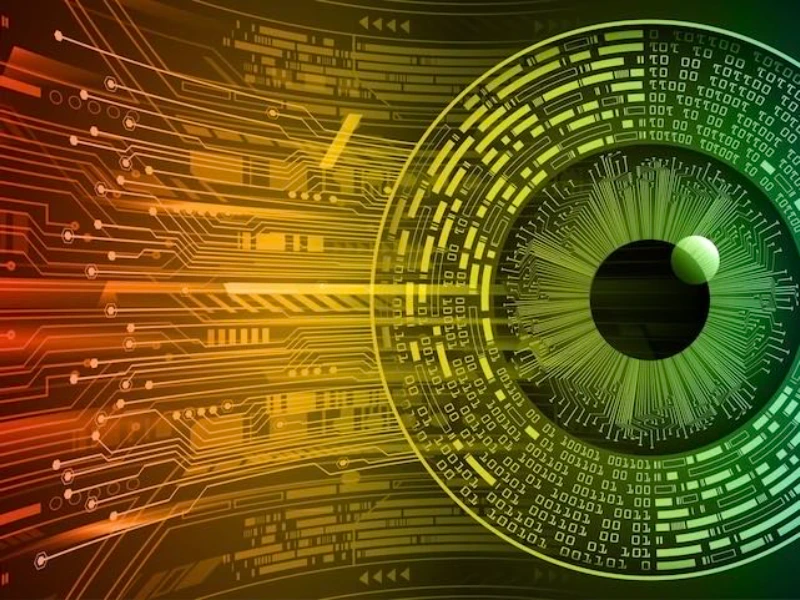- Computer vision is a field of artificial intelligence that enables machines to interpret and understand visual information from the surrounding environment.
- It empowers computers to perceive the world through digital images or videos, just as humans do with their eyes.
- By leveraging advanced algorithms and deep learning models, computers can recognise objects, detect patterns, and make intelligent decisions based on visual data.
Computer vision (CV) is the study of how machines comprehend the content of images and videos. By analysing specific elements within visual data, computer vision algorithms enable predictive or decision-making tasks.
Deep learning is now the predominant approach for computer vision. This piece examines various applications of deep learning in computer vision, with a focus on the benefits of convolutional neural networks (CNNs). CNNs offer a layered structure that enables neural networks to pinpoint the most significant features within an image, enhancing accuracy and efficiency in analysis.
Also read: What is an example of a supercomputer?
What is computer vision?
Computer vision, a subset of machine learning, focuses on interpreting and comprehending images and videos to enable computers to “see” and perform visual tasks akin to humans.
Computer vision models are engineered to analyse visual data by identifying features and context learned during training. This capability allows models to interpret images and videos, applying their insights to predictive or decision-making processes.
While both deal with visual data, it’s important to distinguish image processing from computer vision. Image processing entails modifying or enhancing images to generate a new output, such as adjusting brightness or resolution, blurring sensitive details, or cropping. Unlike computer vision, image processing doesn’t necessarily involve content identification.
Also read: Intel develops the largest neuromorphic computer system
The role of deep learning
Deep learning, a subset of machine learning, has revolutionised computer vision by enabling more accurate and efficient image analysis. At the core of deep learning are artificial neural networks, complex networks of interconnected nodes inspired by the human brain. These neural networks are trained on large datasets to learn complex patterns and features directly from raw image data, without the need for explicit programming.
Uses of deep learning in computer vision
The development of deep learning technologies has enabled the creation of more accurate and complex computer vision models. As these technologies increase, the incorporation of computer vision applications is becoming more useful. Below are a few ways deep learning is being used to improve computer vision.
Object detection
There are two common types of object detection performed via computer vision techniques. The first step of Two-step object detection requires a Region Proposal Network (RPN), providing a number of candidate regions that may contain important objects. The second step is passing region proposals to a neural classification architecture, commonly an RCNN-based hierarchical grouping algorithm, or region of interest (ROI) pooling in Fast RCNN. These approaches are quite accurate, but can very slow.
With the need for real time object detection, one-step object detection architectures have emerged, such as YOLO, SSD, and RetinaNet. These combine the detection and classification step, by regressing bounding box predictions. Every bounding box is represented with just a few coordinates, making it easier to combine the detection and classification step and speed up processing.
Localisation and object detection
Image localisation involves pinpointing the locations of objects within an image, typically denoting them with bounding boxes. Object detection builds upon this by not only localising objects but also classifying them. This task heavily relies on convolutional neural networks (CNNs).
Localisation and object detection are instrumental in identifying numerous objects within intricate scenes, enabling applications such as interpreting medical diagnostic images.
Semantic segmentation
Semantic segmentation, also referred to as object segmentation, differs from object detection by precisely identifying pixels associated with individual objects, eliminating the need for bounding boxes. This approach allows for more precise delineation of image objects.
Semantic segmentation is commonly implemented using fully convolutional networks (FCN) or U-Nets.
A prevalent application of semantic segmentation is in training autonomous vehicles. This technique enables researchers to utilise images of streets or highways with accurately defined object boundaries, facilitating robust training for autonomous navigation systems.
Pose estimation
Pose estimation is a method that is used to determine where joints are in a picture of a person or an object and what the placement of those joints indicates. It can be used with both 2D and 3D images. The primary architecture used for pose estimation is PoseNet, which is based on CNNs.
Pose estimation is used to determine where parts of the body may show up in an image and can be used to generate realistic stances or motion of human figures. Often, this functionality is used for augmented reality, mirroring movements with robotics, or gait analysis.

